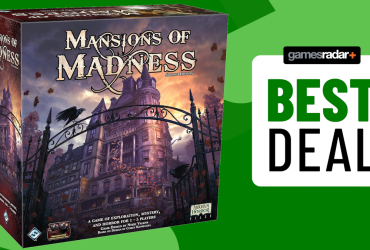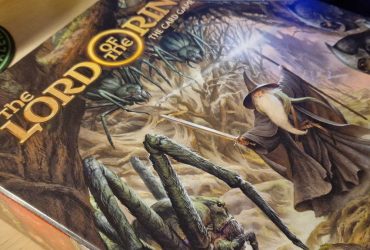To be honest with you, I misjudged Warhammer Underworlds: Embergard.
When this new edition of the skirmish wargame was announced as part of Warhammer Day, I’ll admit to being confused. Don’t get me wrong – I’m always in favor of more accessible rules. But wasn’t it already streamlined? I certainly thought so. This system has always been a more accessible gateway to the hobby than Warhammer 40,000 or Age of Sigmar, largely because it has more in common with the best board games than anything else. If you ask me, it’d already done a good job of easing newcomers in. What could Warhammer Underworlds: Embergard add to that?
As it turns out, a lot.
You see, it’s been a hot minute since I’ve played Underworlds. I love the game and have been a fan since stepping into the Gnarlwood two years ago, yes, but ‘having a newborn baby’ and ‘free time’ don’t usually gel. (I’ve managed to squeeze a little hobbying in between all those lovely cuddles and night feeds, but I’ve had to be more selective when it comes to actual games.) So when I sat down with Embergard, I didn’t notice a difference. Not at first, anyway. That’s why I put down my dice mid-session, got up, and dug out the old rules with the sort of bemusement you get when you walk into a room and forget what you were looking for.

Then I saw the turn sequence. Good lord.
In comparison to Embergard, the old version is… well, it’s a bit overwhelming. The yes/no table you follow to work out what you should do next is tangled with reaction steps and surges and inspiration, for example. The new edition? It drops all that for something much more beginner-friendly.
In a bid to streamline the old ‘Action Phase,’ its many minor steps have been stripped away. Now, your turn is split into just the Action step – where you move, charge, attack, defend yourself, go on guard, or discard/redraw cards – followed by the Power step. Those surge abilities (AKA cards played out of sequence when triggered) are instead dealt with only when relevant, as dictated by the card in question. It’s the same with inspiring your fighters, e.g. making them more powerful based on a specific trigger.
Although this may not sound like much of a change, it’s more significant than you’d think. For starters, it streamlines the flow of the game where new players are concerned. Rather than worrying about ifs, buts, and maybes before they even need to, beginners can tackle the basics without distraction. It also treats players as grown-ups, in a way; it trusts them to keep track of their team’s surges or inspire triggers and act when needed. I love this in particular. Why make things more complicated than they need to be?

Secondly, and it pains me to say: I spoke too soon when decrying the loss of illustrations on decks. I adore the old, painterly style and still miss it, but the model photography looks slick as hell in person. It doesn’t feel like a half-hearted alternative as I’d feared, and crucially, they don’t seem to reuse existing pictures. These are bespoke images with handsome scenery and lighting that can still bring the atmosphere when needed.
I appreciate that images featuring models from all warbands work better with the more generalized decks, too. If you’ve not kept up with the news, Embergard drops warband-specific decks in favor of more generalized ones based on battlefield roles. This allows you to chop and change more freely, and it’s meant to even the playing field by giving everyone the same tools to work with. I was sad about that until I actually played the new edition myself. My warband’s abilities now live on their warscroll instead, so I’m not in danger of losing what makes them special by mixing up a deck. The cards being more generic means I’m far more likely to make a new deck or try something different, too.
Basically? I was wrong, and have been turned round on Embergard. It’s not all sunshine and roses, of course (those models aren’t the easiest to construct, and it winds me up that there still isn’t a solution for all those loose tokens that’ll float around the box), and I’ll be back with a full review soon. But until then, I think this makes a good game even better.
Want to get into the game for less? There should be some good offers coming our way this month as part of November’s Black Friday Warhammer deals. Until then, why not try something new with these essential board games for adults?












Leave a Reply